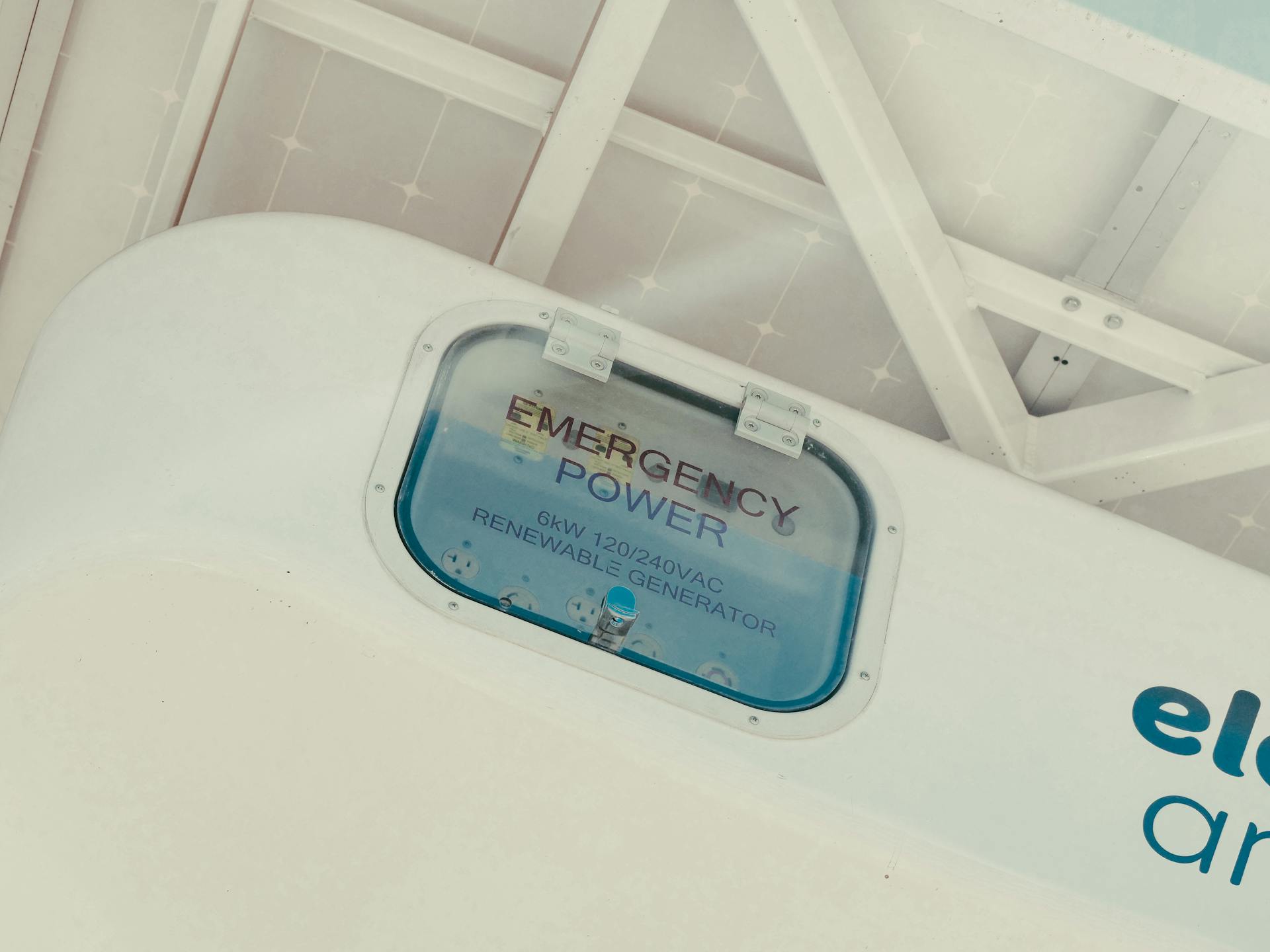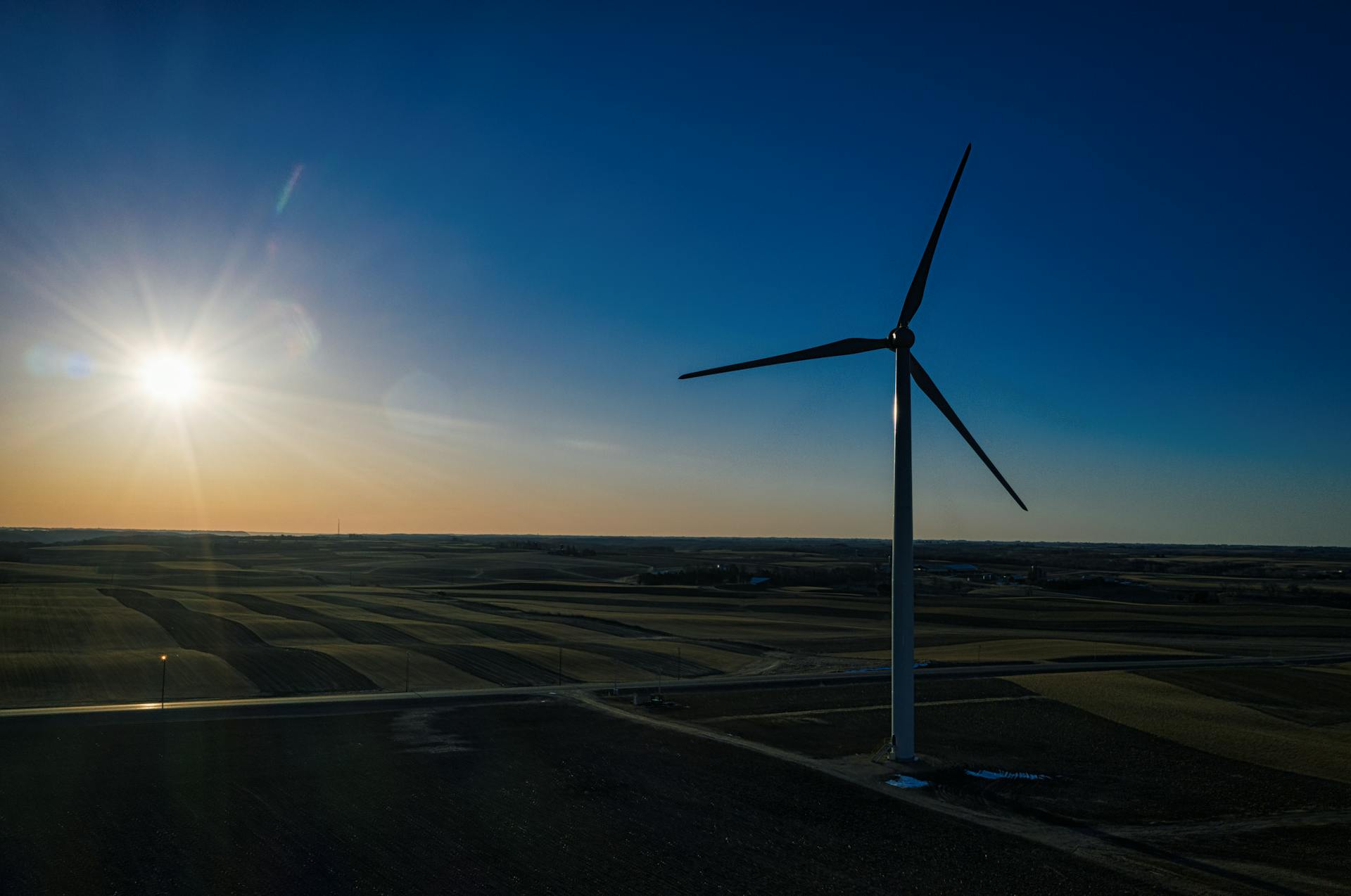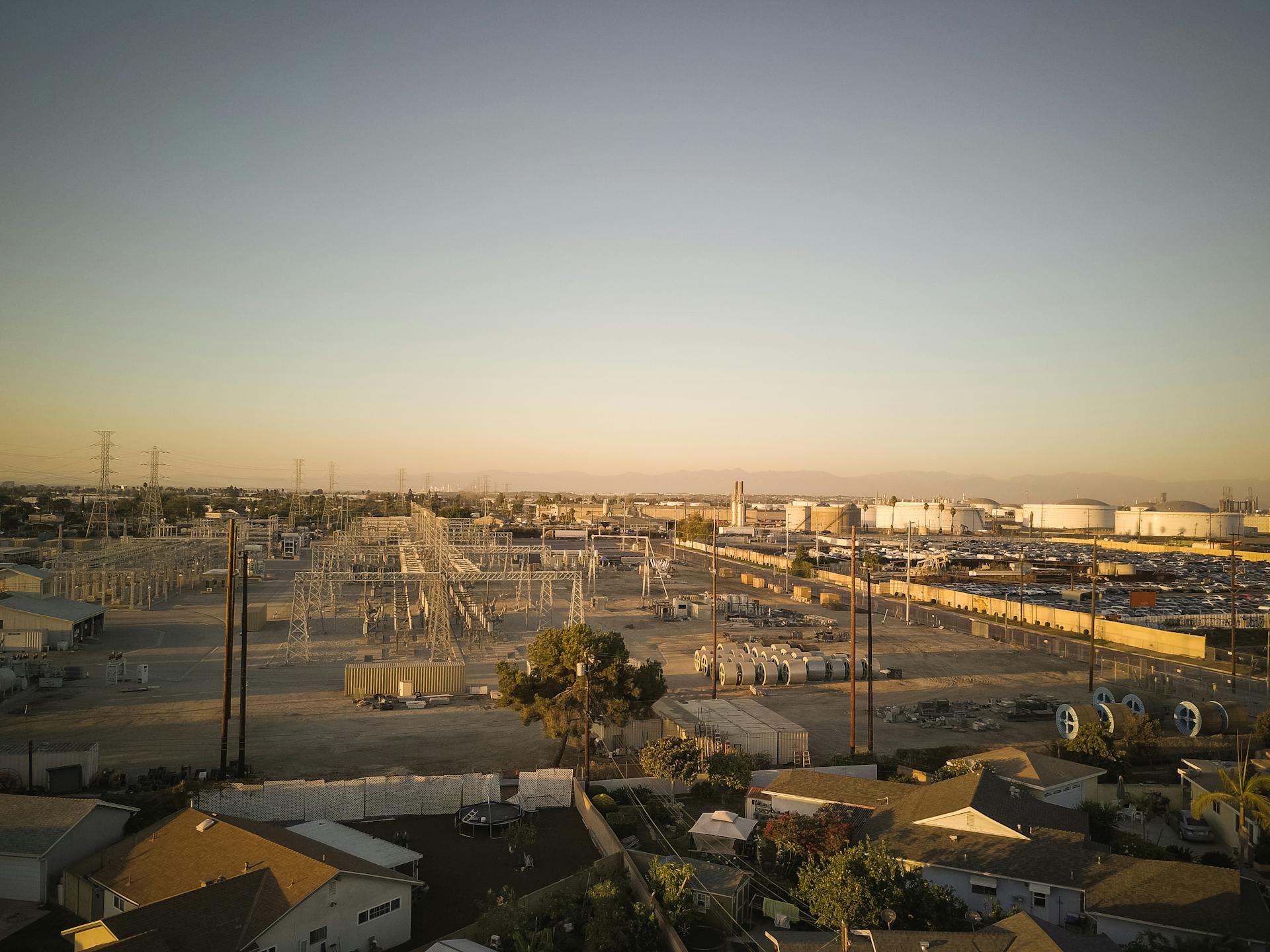
A DIY thermoelectric generator project is an exciting and rewarding endeavor that can harness waste heat to generate electricity. This project is perfect for makers and inventors who want to explore alternative energy sources.
The basics of thermoelectric generators involve the conversion of heat into electricity using thermocouples, which are made from two dissimilar metals.
Thermocouples work by generating a voltage between the two metals when there is a temperature difference between them. This voltage can then be converted into electricity using a circuit.
By building a DIY thermoelectric generator, you can experiment with different materials and designs to optimize the performance of your device.
What Is Teg?
The TEG, or Peltier generator, is a solid-state semiconductor device that converts heat difference into electricity.
It works by stimulating the Peltier effect, which moves heat from the cold to the hot side.
The thermoelectric generators use two different semiconductor materials for the Seebeck effect, which is necessary for producing electrical energy.
The Seebeck effect starts producing electricity when a temperature difference is applied across the TEG's flip sides.
This is made possible by the configured internal structure of the TEG, which uses doped p and n semiconductors.
Check this out: Inverter Generator Not Producing Power
History and Advantages
The history of thermoelectric generators dates back to 1821 when Thomas Johann Seebeck discovered that a thermal gradient can produce electricity.
Thomas Johann Seebeck's discovery was a major breakthrough, and it paved the way for further research in the field. Jean Charles Athanase Peltier built upon this discovery in 1834, showing that running an electric current through a junction of two dissimilar conductors could cause it to act as a heater or cooler.
Thermoelectric generators have come a long way since their inception, with advancements in technology making them more efficient and reliable. One notable example is the invention of a photovoltaic panel by George Cove in 1909, although he intended to invent a thermoelectric generator.
The advantages of thermoelectric generators are numerous. They are all-solid-state devices that do not require any fluids for fuel or cooling, making them non-orientation dependent. This allows for use in zero-gravity or deep-sea applications.
Some of the key benefits of thermoelectric generators include:
- no moving parts
- silent operation
- limited maintenance required
- wide operating temperature range
History
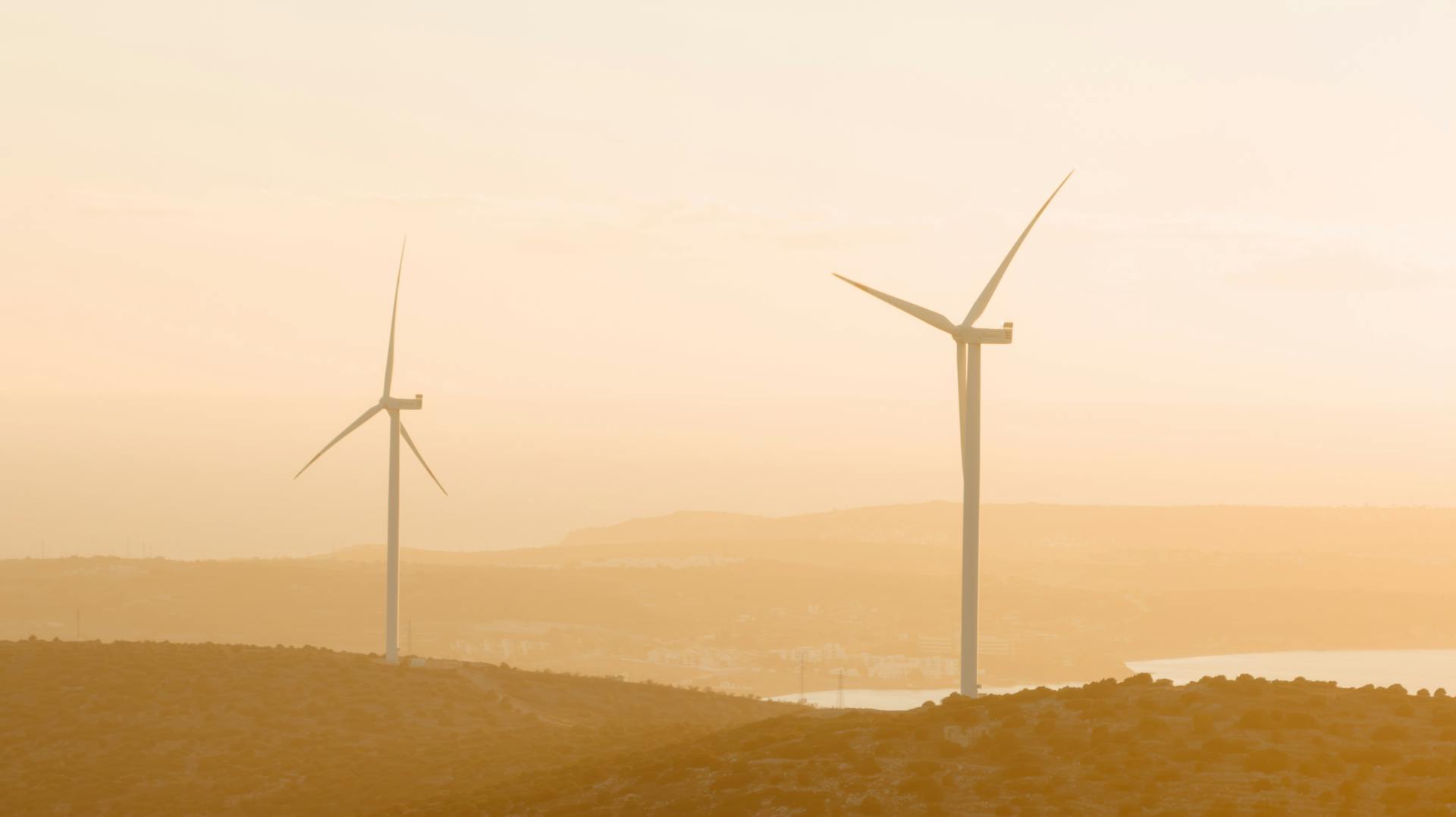
Thomas Johann Seebeck discovered the thermoelectric effect in 1821, where a thermal gradient between two conductors produces electricity. This phenomenon occurs because a temperature gradient in a conducting material causes heat flow, resulting in the diffusion of charge carriers.
A temperature gradient is created when there's a difference in temperature between two regions, causing heat to flow from the hot region to the cold region. This heat flow is what generates the electricity.
In 1834, Jean Charles Athanase Peltier discovered the reverse effect, where an electric current through the junction of two dissimilar conductors can cause it to act as a heater or cooler, depending on the direction of the current.
George Cove's accidental invention of a photovoltaic panel in 1909 is a notable milestone in the history of thermoelectricity.
A different take: Direct Current Electric Generator
The Pros
Thermoelectric devices have some amazing benefits that make them a great solution for various applications. They have no moving parts, which means they're incredibly reliable and require limited maintenance.

One of the key advantages of thermoelectric devices is that they're silent, making them perfect for applications where noise is a concern. This is especially useful in deep-sea or zero-gravity environments.
Here are some of the key benefits of thermoelectric devices:
- Have no moving parts
- Are silent
- Require limited maintenance
- Have a wide operating temperature range
These benefits make thermoelectric devices a great solution for applications where reliability and efficiency are crucial. They can be used to boost efficiency and reduce environmental impact by producing usable power from waste heat.
Additional reading: Seebeck Generator Efficiency
DIY Generator Construction
To build a DIY thermoelectric generator, you'll need to start by constructing the TEG (Thermoelectric Generator) itself. This usually involves placing two special semiconductors, P-type and N-type, with different electron power densities, in alternating pillars that align electrically.
The pillars should be placed thermally and in series, with a thermally conducting plate on each side to join both pillars. A ceramic conducting plate is a good option if you don't want to add another insulator.
The TEG is the heart of your DIY thermoelectric generator, and it's essential to get it right. To apply a voltage to the semiconductors' free ends, you'll need to use a voltage regulator.
Here's a list of materials you'll need to build the TEG:
- Ceramic conducting plate
- Solder wire
- Thermoelectric paste
- X-acto knife
- Loctite
With the TEG constructed, you can start thinking about the rest of the DIY thermoelectric generator. In the next section, we'll cover the materials and setup required to complete the project.
Working Principle and Efficiency
Thermoelectric generators work by harnessing the Seebeck effect, which occurs when semiconductors experience charge carriers moving within.
The Seebeck effect generates a voltage potential directly proportional to the temperature difference across the semiconductor, with charge carriers like holes in p-type semiconductors and electrons in n-type semiconductors.
The efficiency of TEGs can be as high as 33-37% with a ZT value of 3-4, making them competitive with certain heat engine efficiencies.
To achieve high efficiency, materials with low thermal conductivity, high electrical conductivity, low carrier concentration, and a high Seebeck coefficient are needed, but these properties are closely intertwined, requiring a balancing act.
Materials like monolayer AsP3 and p-type doped SnP3 have reached ZT values of 3.36 and 3.46, respectively, showing promise for increasing efficiency.
For another approach, see: 3 Phase Ac Generator
How Generators Work
Thermoelectric generators work by using the Seebeck effect, which happens when semiconductors experience charge carriers moving within.
The type of charge carrier depends on the type of semiconductor used, with holes in doped p-type semiconductors and electrons in n-type semiconductors.
Charge carriers tend to diffuse from the semiconductor's hot side, resulting in a buildup of energy charges at one end of the device.
This buildup generates a voltage potential that's directly proportional to the difference in temperature across the semiconductor.
The difference in temperature across the semiconductor is what drives the thermoelectric generator to produce electricity.
Semiconductors with a larger temperature difference can produce a greater voltage potential, making them more efficient.
The construction of thermoelectric generators is vital to their functionality, with the specific design of the semiconductors playing a crucial role.
The hot side of the semiconductor is where the action happens, with charge carriers diffusing and generating a voltage potential.
The efficiency of thermoelectric generators depends on the quality of the semiconductors and the design of the device.
Additional reading: Does a Generator Produce Ac or Dc
The Seebeck Effect
The Seebeck Effect is a fundamental concept in thermoelectricity, and it's what makes thermoelectric generators work. It happens when an electrically conducting material develops an electromotive force between two points due to a temperature range difference.
The Seebeck effect is also known as the thermoelectric or Seebeck emf, and it's a result of the difference in temperature between the hot and cold ends of the material. The Seebeck coefficient is the ratio between the temperature range difference and the emf.
A thermocouple is used to measure the potential difference across the ends (hot and cold) between two distinct module design materials. This potential difference is directly proportional to the difference in temperature across the semiconductor.
However, the Seebeck effect requires extreme temperature differences, which can be a challenge in thermoelectric systems. Excess heat on one side of the device can heat the other side, potentially damaging the TEG and producing zero electricity.
To maintain optimal response, only one side of the TEG should be hot, and the counter side should be relaxed. This is essential to ensure the Seebeck effect works efficiently and produces electricity.
Take a look at this: Peltier Effect Generator
Materials and Processing
Novel processing techniques can significantly improve the performance of thermoelectric materials. By exploiting the scattering of different phonon frequencies, it's possible to selectively reduce lattice thermal conductivity without negatively affecting electrical conductivity.
In a bismuth antimony tellurium ternary system, liquid-phase sintering is used to produce low-energy semicoherent grain boundaries that don't scatter electrons. This approach has resulted in a reported zT value of 1.86, a significant improvement over commercial thermoelectric generators.
Applying pressure to the liquid in the sintering process creates a transient flow of the Te-rich liquid and facilitates the formation of dislocations that greatly reduce lattice conductivity.
Material Class Selection
Choosing the right material class is a crucial step in the process. Metals are a poor choice due to their high thermal conductivity and low Seebeck coefficient.
Semiconductors are the best class of materials for this application, despite not being the most ideal. They have moderate electrical conductivity and Seebeck coefficient, but a high thermal conductivity.
Heavily doped semiconductors work best, thanks to their unique properties.
Novel Processing
Novel processing is a game-changer in the world of thermoelectric materials. It allows for the selective reduction of lattice thermal conductivity without negatively affecting electrical conductivity.
A key technique used in novel processing is liquid-phase sintering, which produces low-energy semicoherent grain boundaries that don't scatter electrons. This method is particularly effective in bismuth antimony tellurium ternary systems.
Applying pressure to the liquid during sintering creates a transient flow of the Te-rich liquid, facilitating the formation of dislocations that greatly reduce lattice conductivity. This breakthrough has led to significant improvements in thermoelectric performance.
The reported zT value of 1.86 in a bismuth antimony tellurium ternary system is a testament to the effectiveness of novel processing. This value is a significant improvement over the current commercial thermoelectric generators with zT ~ 0.3–0.6.
Reducing Lattice Thermal Conductivity
Reducing lattice thermal conductivity is a key factor in increasing the ZT value. The lattice thermal conductivity can be reduced by limiting the transportation of phonons.
To reduce thermal conductivity, we essentially need to limit the transportation of phonons. Phonons are the carriers of heat, just like electrons carry electricity.
One way to do this is through scattering: where the phonon bumps into something and scatters off in another direction. This is also perhaps the most effective way to reduce thermal conductivity.
Point defect scattering is a great way to reduce thermal conductivity because it's much more likely to scatter phonons rather than electrons. This is great because we also need high thermal conductivity for thermoelectrics.
Dislocation scattering is a form of line defect and will scatter mid and high frequency phonons. Interface scattering is effective at scattering long wave phonons.
Resonance scattering is used in thermoelectric materials that have a special crystal structure. A very interesting example would be topological materials.
Additional reading: Do You Need an Inverter Generator for Home Backup
Safety and Quality
A well-designed thermoelectric generator can operate safely and efficiently for years with minimal maintenance.
The choice of materials, such as bismuth telluride or antimony, plays a crucial role in determining the generator's performance and lifespan.
Proper thermal management is essential to prevent overheating and ensure the generator's longevity.
The article's example of a thermoelectric generator using a copper heat sink demonstrates effective thermal management.
Safety Measures
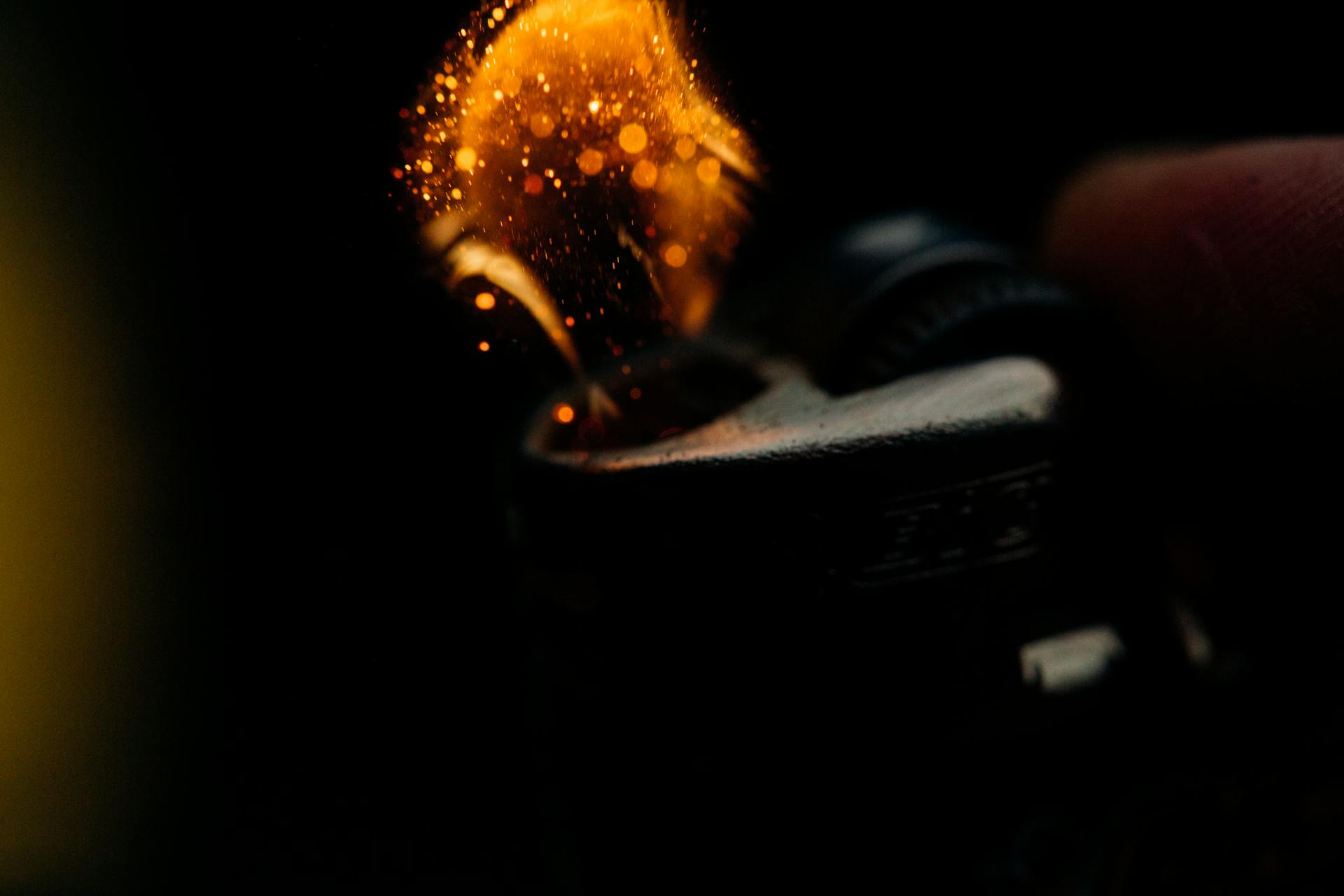
To ensure your projects are safe and secure, it's essential to take necessary precautions.
Coating wooden blocks with tinfoil is a good idea when they'll be near an open flame, as it prevents any potential harm.
Putting a piece of tin foil on the bottom of a tin can help prevent wires from melting.
Using a cork as an insulator under wire ends is also crucial, as it prevents charge from flowing into the tin foil.
Quality Improvement
Improving the quality of a material can have a significant impact on its thermoelectric performance. A larger effective mass of charge carriers will increase the Seebeck coefficient and then the ZT value.
A high effective mass affects the states available for charge carriers to occupy energy levels in the crystal lattice, resulting in a higher density of states. This means there are more available energy states for charge carriers to move around.
High energy band degeneracy contributes to effective carrier mass, which results in a higher Seebeck coefficient. Energy band degeneracy is when two or more distinct states of the same system can have the same energy.

Degeneracy is closely related to symmetry, and high low symmetry has very low KL (lattice thermal conductivity). This means that materials with high symmetry have good thermoelectric performance.
Resonance states can tend to increase degeneracy in the electronic band structure of the material. This can be achieved by doping, which introduces energy levels that align with the original energy levels of the material.
If the Fermi energy falls near the centre of the resonance band, it creates lots of available states for electrons at or near the Fermi energy. This results in many free charge carriers, allowing for excellent electrical conductivity.
Install and Solder
You'll need to decide whether to use 8 or 10 TECs, but keep in mind that 10 will provide more voltage and current than 8.
First, measure the dimensions of your TEC or check the Thermoelectric Cooler Technical Data Sheet (TDS) to ensure it's 40x40 mm.
Make sure your aluminium tray has a flat base, as the TEC needs to make full contact with it.
I learned this the hard way when I bought a tray with a slight slope, which wouldn't work because it wouldn't allow for the temperature gradient.
Apply thermal paste on the blank side of the TEC and glue it with the letters facing up.
You'll notice that the red and black wires form pairs, except for the TEC number 8 red wire and TEC number 4 black wire, which should stay loose.
Solder the black wire of TEC number 5 to TEC number 1 red wire to complete the loop.
After completing this step, you're done with soldering, and I advise you to stick more insulation tape over the soldering points to avoid contact with other surfaces.
Frequently Asked Questions
How much electricity can a thermoelectric generator produce?
A thermoelectric generator can produce between 1-125 watts of electricity, and up to 5 kilowatts when used in a modular connection.
How many volts can a TEG produce?
A TEG can produce up to 14.4 volts, but our setup currently achieves 13.8 volts.
How much heat can a thermoelectric generator handle?
A thermoelectric generator can withstand temperatures of up to 600°C on its hot side while maintaining a temperature of 100°C on its cold side. This allows it to efficiently generate power in a wide range of high-temperature applications.
What is the best material for a thermoelectric generator?
For thermoelectric generators, silver selenide stands out as a top material due to its high electrical conductivity and low thermal conductivity, making it ideal for converting heat into electricity. Its unique properties make it a promising choice for efficient thermoelectric applications.
Can you use Peltier to generate electricity?
Peltier modules can generate an electric voltage from a temperature difference, but they don't create free electricity. They convert heat into electricity, but require a temperature gradient to produce power.
Sources
- https://en.wikipedia.org/wiki/Thermoelectric_generator
- https://medium.com/@sasha_przybylski/harnessing-heat-building-a-thermoelectric-generator-cc3b4dc72074
- https://www.instructables.com/Thermoelectric-Generator-DIY/
- https://www.wellpcb.com/blog/pcb-projects/diy-thermoelectric-generators/
- https://news.utdallas.edu/science-technology/thermoelectric-generators-2020/
Featured Images: pexels.com
